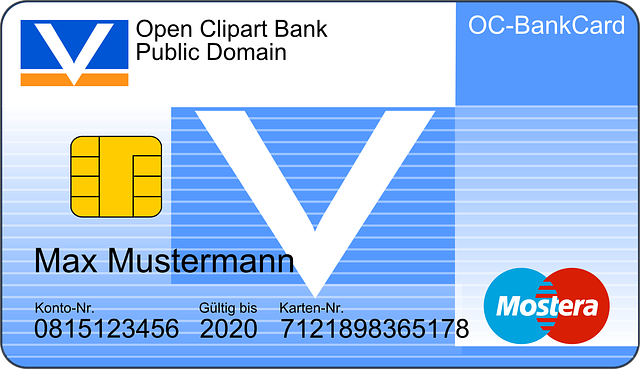TL;DR:
https://fasteasybusinessloans.com provides businesses with quick cash flow by using outstanding invoices as collateral, offering flexibility over traditional loans that demand stricter eligibility. Key benefits include improved cash flow management and absence of personal guarantees. However, drawbacks such as potentially higher interest rates, dependence on client payments, and surrender of future revenue must be considered.
To secure the best option, thoroughly research invoice financing providers, evaluating terms, rates, transparency, and customer support while aligning with your business's unique needs. The application process involves assessing invoice portfolio and payment history, weighing both advantages (e.g., immediate working capital) and potential drawbacks (e.g., late payments, fees).
Looking to unlock your business’s cash flow potential? Invoice financing could be the key. This powerful tool allows businesses to access funds tied to outstanding invoices, providing a flexible and fast way to boost capital. In this article, we demystify invoice financing benefits and guide you through the process. We’ll explore how invoice financing works, delve into invoice financing vs loans, and help you understand the pros, cons, and key factors involved. Learn how to apply for invoice financing and choose the right invoice financing providers to support your business’s growth.
- Understanding Invoice Financing: Unlocking Cash Flow Potential
- Invoice Financing vs Traditional Loans: Weighing Your Options
- The Application Process: How to Choose the Right Provider
- Pros, Cons, and Key Factors: Making an Informed Decision
Understanding Invoice Financing: Unlocking Cash Flow Potential

Invoice financing is a powerful tool that enables businesses to unlock their cash flow potential. Unlike traditional loans, which often require collateral and strict repayment terms, invoice financing leverages your outstanding invoices as collateral. This means you can access funds against the value of these invoices before they’re due, providing much-needed capital for operations, expansion, or other strategic initiatives.
Understanding how invoice financing works is crucial when comparing it to loans. With invoice financing, a provider advances you money based on your outstanding invoices, and repayment occurs once the client pays those invoices. This method offers several benefits, such as improved cash flow, no personal guarantees required, and flexible repayment terms. However, there are also pros and cons to consider, including potential interest rates higher than loans, reliance on clients’ timely payments, and the need for a steady stream of invoices to maintain financing. When applying for invoice financing, it’s essential to research various providers, evaluate their terms and conditions, and choose one that aligns with your business needs.
Invoice Financing vs Traditional Loans: Weighing Your Options

When considering funding options for your business, it’s crucial to understand the distinct advantages and drawbacks of invoice financing compared to traditional loans. While both seek to provide capital, they operate on different principles. Invoice financing involves selling your outstanding invoices (unpaid customer bills) to a third-party provider at a discount. This immediately boosts your cash flow, allowing you to access funds quickly without complex collateral requirements. It’s particularly beneficial for businesses with strong sales pipelines and reliable customers.
Traditional loans, on the other hand, involve borrowing money from banks or lenders based on your creditworthiness and repayment ability. These loans typically offer lower interest rates but may require collateral, a detailed business plan, and stricter eligibility criteria. How invoice financing works is simpler: you sell invoices at a discount, repaying the provider once the customer settles their bill. This method suits businesses looking for short-term funding without the long-term commitment of traditional loans. When weighing your options, consider your cash flow needs, time frame, and the overall health of your business to determine whether invoice financing benefits you most.
The Application Process: How to Choose the Right Provider

When exploring invoice financing as a cash flow solution, understanding the application process is crucial. Unlike traditional loans that often require collateral and extensive credit checks, invoice financing leverages your existing invoices as collateral. This means business owners can access funds based on their outstanding invoices, providing a faster and more flexible option. The provider will assess your invoice portfolio, typically requiring basic information about your business, industry, and average invoice value. They may also delve into your payment history to ensure timely collection from clients.
Choosing the right provider involves considering both the invoice financing benefits and potential drawbacks. On one hand, it offers immediate working capital without the need for personal guarantees or complex underwriting. However, how invoice financing works differs from loans; late client payments impact cash flow, and fees can accumulate over time. Weighing the pros and cons of invoice financing against traditional loan options will help you navigate this alternative funding source effectively during your application.
Pros, Cons, and Key Factors: Making an Informed Decision

When considering invoice financing, businesses should weigh both its advantages and potential drawbacks to make an informed decision. This type of financing offers several benefits, such as providing quick access to cash, improving cash flow management, and streamlining payment processes. It’s particularly appealing for businesses with a steady stream of invoices but limited working capital. Additionally, compared to traditional loans, invoice financing can be more flexible, focusing on the value of outstanding invoices rather than a business’s overall financial health.
However, there are also considerations. The process involves third-party involvement, meaning businesses give up a portion of future revenue in exchange for immediate funding. This can lead to higher costs if not managed carefully. Moreover, applying for invoice financing requires detailed financial records and can be time-consuming. Key factors to consider when choosing an invoice financing provider include understanding the terms, comparing rates, assessing transparency, and evaluating customer support. Thorough research will help ensure a business selects a reputable provider that aligns with its specific needs.






